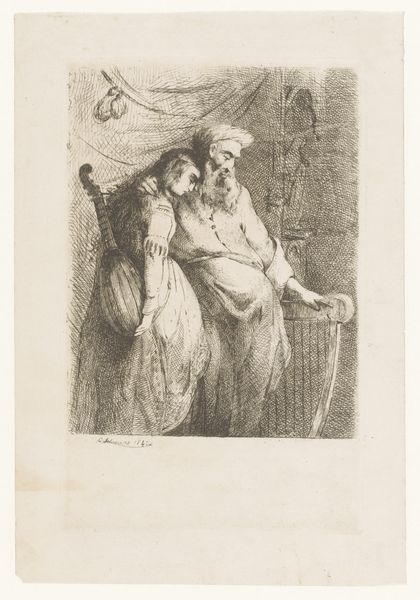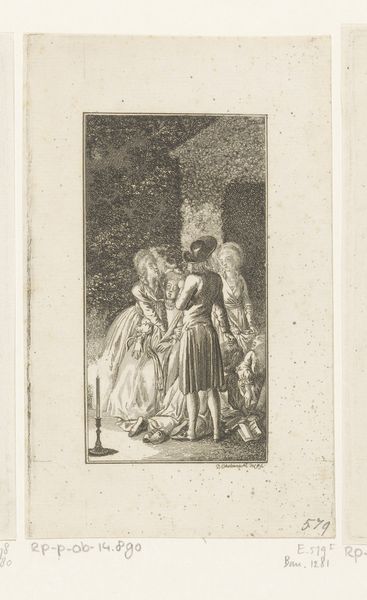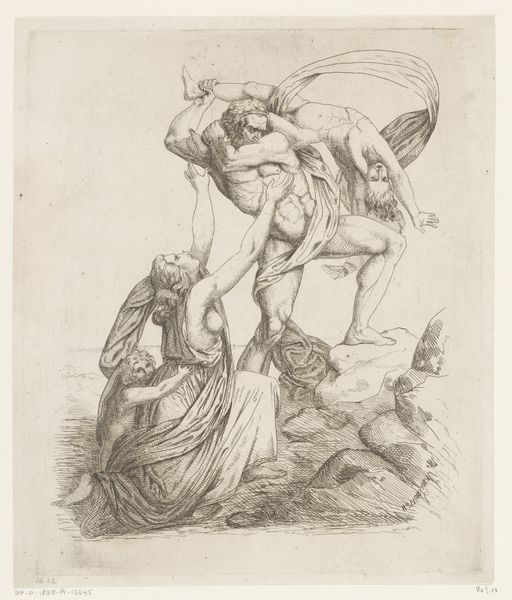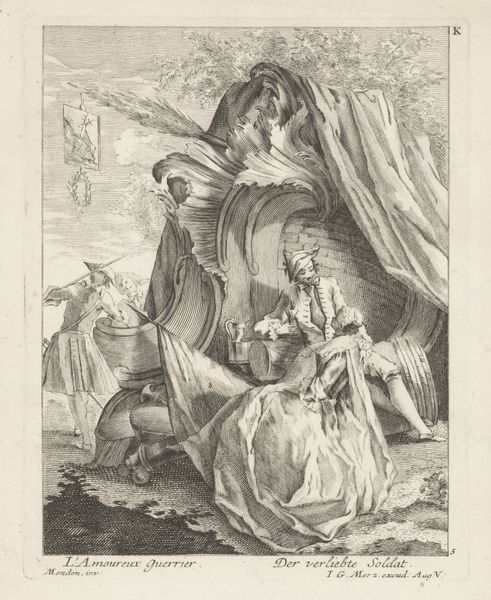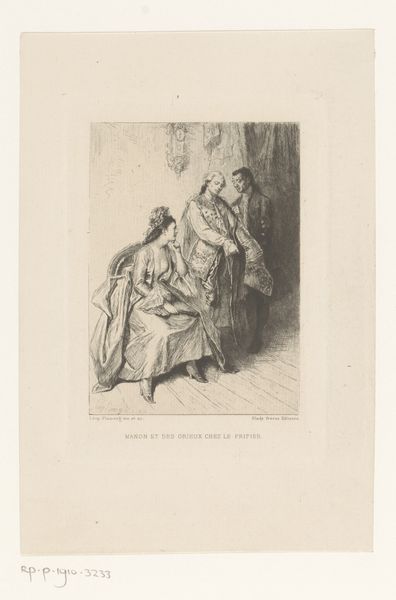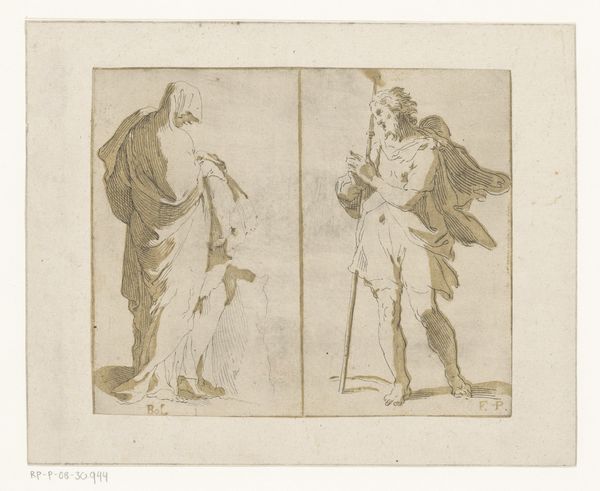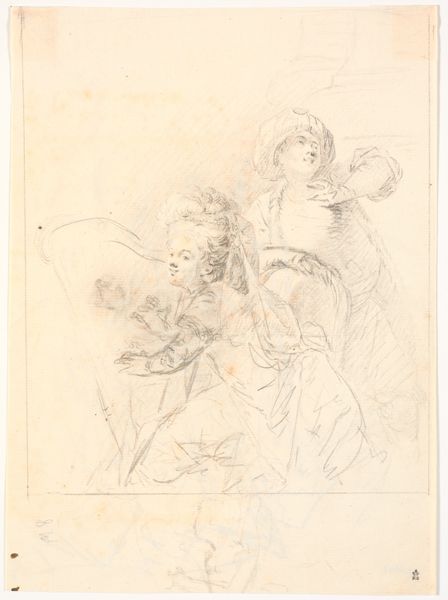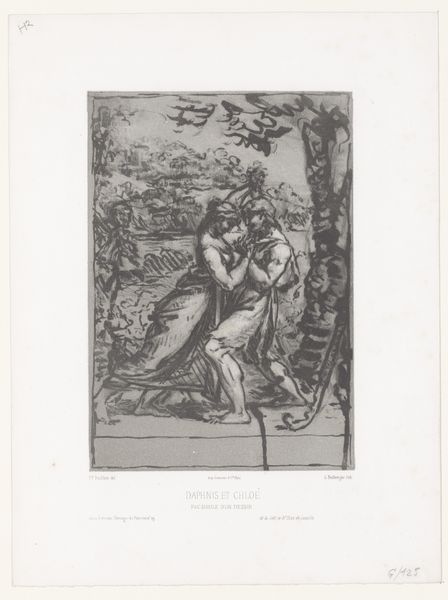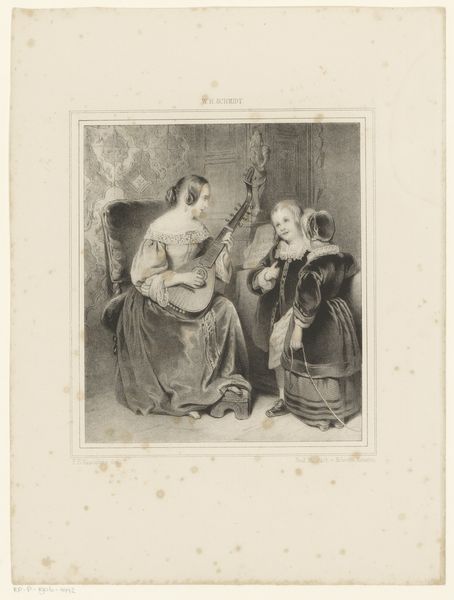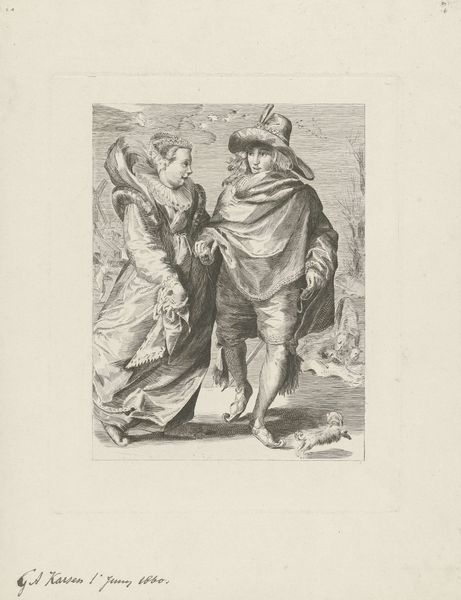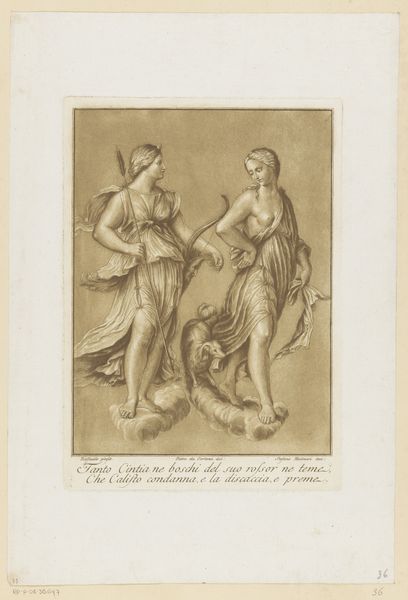
print, engraving
#
narrative-art
#
baroque
# print
#
figuration
#
history-painting
#
engraving
Dimensions: 173 mm (height) x 150 mm (width) (plademaal)
Curator: Karel van Mander III brings us "Judith with her servant," an engraving from 1631, part of the Statens Museum for Kunst's collection. Editor: The first thing that strikes me is how it captures the moment of both triumph and vulnerability. The figures emerge from this dense darkness, with their faces telling very different stories. Curator: Absolutely. Mander, working within the Baroque idiom, was deeply involved in the visual representation of biblical narratives. Judith’s story, as a tale of a woman saving her people, was commonly depicted. It would have been particularly charged at the time, circulating in the context of theological and political upheaval. Editor: The act of beheading Holofernes – it's about more than just faith and courage. It’s a study of power, subverted power. In her left hand, Judith holds what appears to be a lantern. What I see is a carefully planned operation; it's cold, cunning, and effective. Curator: Exactly. Printmaking democratized images; allowing them to disseminate and reach broader audiences that went beyond traditional religious or aristocratic circles. That in itself challenges conventional patriarchal art systems. Editor: I read in it echoes of Artemisia Gentileschi's unflinching gaze that exposes her emotional toll. The servant is often depicted as complicit or simply assisting, but here, their shared journey to confront power becomes evident. Look how the older woman appears to understand that what Judith is undertaking is a necessity to shift power imbalances. Curator: And think about the composition; Mander places the women together, shoulder to shoulder in a display of alliance. They stand united to challenge hierarchies through action and defiance. Editor: Mander seems particularly attuned to the undercurrents of gender and agency. That it would also give other women hope of finding courage, in their individual struggles. Curator: Seeing this within a museum context, how do we continue those conversations of challenging power imbalances and offering voices to the powerless through art and its institutions? Editor: Perhaps it is to accept the weight of responsibility. How do we acknowledge where it has fallen short and commit to inclusivity while amplifying marginalized voices within and beyond the frame? Curator: Beautifully put. An image etched centuries ago provoking considerations we need to confront today. Editor: Absolutely, a reminder that art's most profound role is that of inspiring us.
Comments
No comments
Be the first to comment and join the conversation on the ultimate creative platform.
